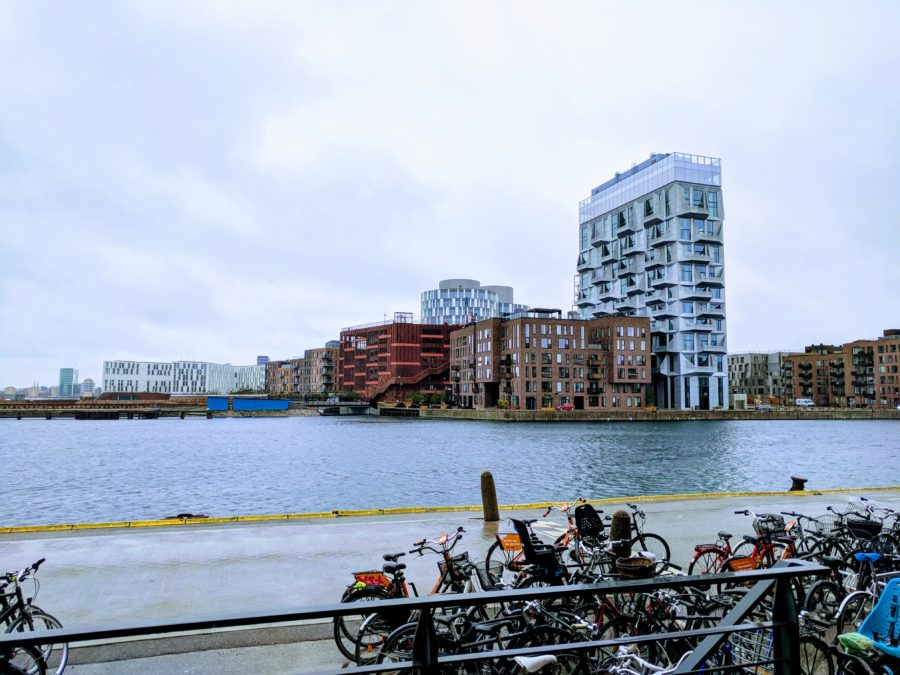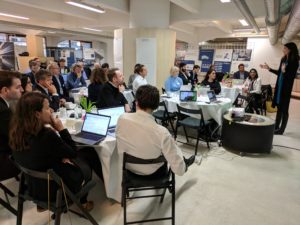13th August 2019 Stockholm, Sweden
International Collaboration for a Flexible Energy System

Joseph Schumpeter’s concept of creative destruction describes perfectly the low carbon transformation of the energy system across Europe. Institutional frameworks and infrastructures are being disrupted as new clean energy innovations, business models and market players make inroads. Yet, the clean energy transition is not nearly moving fast enough for to meet the Paris agreement (much less 1.5 degree targets).
Large-scale, system level demonstrations of technologies are critical to accelerating the transition. At the same time, a new and innovative approach to policy and regulation is needed to level the playing field in the market and drive uptake of proven technologies at scale. However, large-scale test beds are often expensive and there is a significant gap between the flow of finance into clean innovation and what is needed to meet our climate targets. In addition, while risk is an integral part of any innovation process, the energy sector has historically been risk averse.
In this context, international collaboration can play a paramount role mitigating these barriers, enabling countries to pool resources and leverage a wider knowledge base as they experiment and validate new pathways. Collaborative initiatives between countries can also share risks and costs of these demonstrations. Ultimately, the reality is that we have neither the time nor the money to be replicating the mistakes of others.
Earlier this spring, the UK Foreign Office partnered with key smart grid actors from across Europe to organise a roundtable meeting at EnergyLab Nordhavn in Copenhagen that brought together energy and IT experts. The aim was to establish a platform to catalyse international knowledge-exchange and facilitate new innovation partnerships, focusing on energy system flexibility.
Why is Energy System Flexibility Important?
Flexibility can be described as the capability of an energy system to address variability and uncertainty that is introduced by increase solar and wind energy, over different time-scales. The variability and intermittency of renewables generation presents a challenge for the energy system since energy demand does not always (even rarely in some cases) align with the supply from renewables. This problem is exacerbated even further as the electrification of transport and heating will add further demand on the system, which may already face difficulties meeting existing demand with supply from renewables at a given time point. Therefore, one of the solutions is to introduce sufficient “demand-side flexibility” into the energy system so that it can “shift demand” when needed to better align with availability of supply from renewables. One way of achieving this is by embedding storage (e.g. batteries) into the system to so that renewable energy can be stored in times of over-supply and dispatched at times of under-supply. Another way is to incentivise businesses, industries and even households, to shift their energy consumption to time periods when overall demand is relatively low or supply is sufficiently high (known as demand-side response).
Testing Different Solutions across the UK and Europe
Smart grid actors from across Europe came to discuss the various demonstrators for energy system flexibility. In the UK, a concerted effort is underway to explore ways to unlock and maximise the potential from demand-side flexibility. In fact, this issue is at the nexus of the numerous energy system demonstration programmes taking place across the UK, from the UK Government’s Prospering from the Energy Revolution programme on the national level, to the more bottom-up initiatives, such as the Greater London Authorities´ FlexLondon community, Bristol’s Replicate programme, Isles of Scilly’s Smart Energy Islands project and Keel University’s Smart Energy Network.
An increasing number of trail-blazing R&D, demonstration and deployment activities are also taking place across Europe.
- In Sweden, large-scale initiatives such as E.ON’s Interflex Demo-4 and Sustainable Innovation’s VäxEl projects, have recently begun harnessing digital technology to coordinate and mobilise a large fleet of flexibility assets (e.g. storage and heat pumps) to strengthen the hosting capability of localised energy systems for renewables.
- In Denmark, EnergyLab Nordhavn, a major living lab for clean energy system solutions interwoven with one of Europe’s largest metropolitan development districts, has been focusing on ways to introduce flexibility into the energy system through sector-coupling (i.e. between electricity, heat and transport).
- In Berlin, a consortium of 70 energy- and energy-intensive industries are collectively working to identify and characterise flexibility options and the ancillary conditions for relevant applications, against market rules and regulatory requirements, and looking to extrapolate the findings to other regions in Germany.
- In Austria smart grid actors have adopted a methodological framework from the digital health sector to establish a process chain to ensure standard-based interoperability of data exchange within IT infrastructure, which is essential to flexibility providers.
Project leaders and coordinators from some of these initiatives provided insights and key findings from their work.

What are the common challenges?
During the meeting, it quickly became clear some of the most pressing challenges around the introduction of flexibility have more to do with the need to disrupt the institutional, infrastructural and regulatory legacies that we have inherited rather than technological issues per se.
There was strong consensus that the market needs to shift from business models where energy is sold as a commodity to where energy it is sold as a service (e.g. customers pay for energy access rather than energy output/per kWh). This is not surprising since the focus on maximising the usage of existing assets and infrastructures (be it a new power plant or grid expansion) as opposed to building new ones, is essential to incentivise the adoption of demand-side flexibility options. Regulators, utilities and distribution system operators all have an important role to play in moving the energy sector in this direction.
The role of policy makers and regulators in levelling the playing field and preventing misalignment of incentives for the adoption of flexibility innovations and services was highlights. There are known cases where current tariff designs that provide cheaper per-unit energy rates for businesses and industries consuming high volumes of energy, actually dis-incentivise businesses and industries from adopting flexibility options.
There was strong agreement of the need for a framework that enables greater data availability, access and interoperability, enabling flexibility providers to identify locations of high energy demand and grid congestion, and build their business case accordingly.
In addition, many of the new market entrants highlighted the need to streamline the market for flexibility options and services. Flexibility innovations and services can create substantial value in different ways to different stakeholders. Flexibility providers for instance, can sell their services to several different market, such as for ancillary services, distribution system operator service and/or capacity markets. However, at present they are forced to take part in separate disparate markets that makes value stacking and the wider business case difficult for new market entrants.
Perhaps more fundamentally, a clearer understanding and consensus is needed across border on overall aims and objectives of a flexibility market and its key beneficiaries.
Moving Forward
What is clear is that forces are already driving the energy transition, such as low cost rooftop solar PV or adoption of Electric Vehicles. However, many concerns remain about how the market and value chain will evolve and who will be the ‘winners’ or ‘losers’ in the transition.
Key priorities for collaboration are the need for transparency and interoperability on data and price, the need for collaborative approaches to ensure that markets evolve to create a fair playing field for new entrant companies alongside ‘incumbent’ businesses, and most crucially, the need to ensure that consumers are part of the transition and not left behind. Collaboration can support a faster transition from trial to market adoption at scale, and against the backdrop of our urgent decarbonisation goals, this has never been more important.
In partnership with the Energy System Catapult and Energy Unlocked, the UK Foreign Office is currently developing a European community of smart grid actors that are working on designing the flexible energy system of tomorrow. The purpose of this community will be to establish a platform to facilitate knowledge sharing and innovation partnerships around the realisation of a flexible clean energy system, based on common interests and complementary competences and expertise.
(Originally posted in the UK Energy Research Centre Newsletter)
(Featured photo shows Nordhavn in Copenhagen, Denmark’s urban testbest for future energy system solutions)
nice Article…..thankyou…